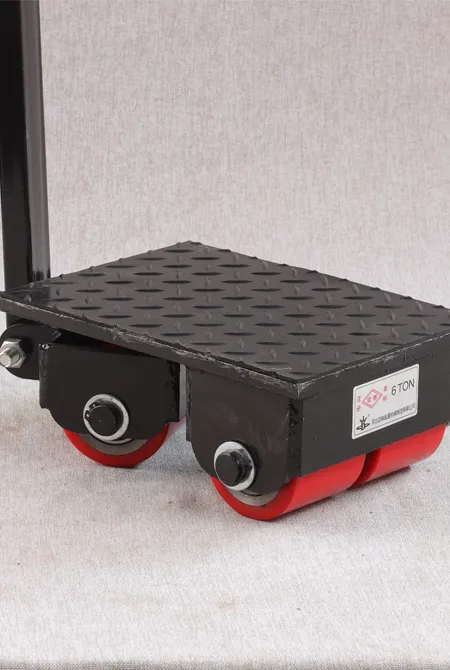Efficient Strategies for Relocating Heavy Machinery in Industrial Settings
The Essentials of Machinery Relocation Ensuring a Smooth Transition
Machinery relocation is a critical process in various industries, encompassing the movement of equipment from one location to another. Whether it involves shifting machines within the same facility or transporting them across vast distances, the successful relocation of machinery requires meticulous planning, skilled personnel, and an understanding of the complexities involved. In this article, we will explore the key aspects of machinery relocation, its challenges, best practices, and the technology that aids in the process.
Understanding Machinery Relocation
Machinery relocation can take place for numerous reasons, including expansion into new facilities, upgrading or replacing older equipment, or optimizing workflow within existing spaces. Each relocation project is unique and can involve different types of machinery, from heavy industrial equipment to delicate laboratory instruments. Regardless of the type, careful consideration must be given to the logistics involved in the relocation process to minimize downtime and ensure safety.
Key Challenges in Machinery Relocation
1. Logistical Planning Efficient logistics are pivotal in any machinery relocation project. This includes creating a comprehensive plan that outlines the sequence of operations, the necessary equipment for moving the machines, and the transportation methods to be used. Ineffective logistics can lead to delays and increased costs.
2. Safety Concerns Safety is paramount during machinery relocation. Heavy machinery poses risks to personnel if not handled correctly. Proper training for the workforce and adherence to safety protocols are necessary to mitigate these risks. Additionally, securing the machinery during transport is essential to prevent accidents and damage.
3. Technical Expertise Some equipment requires specialized knowledge to disassemble, transport, and reassemble. This necessitates the involvement of skilled technicians with experience in handling specific types of machinery. Without the right expertise, there's a higher chance of operational issues after reinstallation.
4. Downtime Management Businesses often face pressure to minimize downtime during machinery relocation. Strategic planning can help mitigate this, including performing the relocation during off-peak hours or scheduling it during planned maintenance periods.
Best Practices for Machinery Relocation
machinery relocation

1. Conduct a Thorough Assessment Before starting the relocation process, conduct a detailed assessment of the machinery involved. This includes checking the physical condition of the machines, understanding their specifications, and mapping out their new location.
2. Create a Detailed Plan A well-documented plan should include timelines, the sequence of tasks, contingency plans, and resource allocation. This serves as a roadmap for the entire relocation process.
3. Communicate Effectively Keeping all stakeholders informed throughout the relocation process is crucial. Regular updates can help ensure everyone is on the same page and ready to address any issues that arise.
4. Use the Right Equipment Selecting appropriate tools and equipment for the job is vital for a successful relocation. This includes rigging equipment, transportation vehicles, and any necessary cranes or hoists.
5. Implement a Post-Relocation Evaluation After the machinery has been relocated and reassembled, conduct a thorough evaluation to ensure everything is functioning properly. This step is vital for identifying any problems early, preventing future outages, and ensuring that the machinery operates at optimal capacity.
The Role of Technology in Machinery Relocation
Advancements in technology have significantly improved the efficiency and safety of machinery relocation. Software solutions for project management allow for better planning and resource allocation. Further, 3D modeling can help visualize the layout of machinery in its new location, allowing for easier identification of potential issues. Additionally, tracking technology facilitates the monitoring of machinery throughout the relocation process, ensuring accountability and transparency.
Conclusion
Machinery relocation is a complex but manageable process that, when executed properly, can lead to greater efficiency and productivity. By understanding the challenges, adhering to best practices, and leveraging technology, businesses can ensure seamless transitions of their crucial assets. As industries continue to evolve, mastering the art of machinery relocation will remain an invaluable skill, driving success and innovation in a rapidly changing market.
-
Unlock Seamless Relocation with Our Heavy Equipment Moving ExpertiseNewsJun.06,2025
-
Unleash Unrivaled Flexibility with Our Adjustable Gantry CraneNewsJun.06,2025
-
Unleash Heavy-Duty Efficiency with Our Industrial Gantry Crane SolutionsNewsJun.06,2025
-
Revolutionize Steel Handling with Our Magnetic Lifter RangeNewsJun.06,2025
-
Master Equipment Mobility with Premium Machinery Mover SolutionsNewsJun.06,2025
-
Elevate Your Material Handling with Magnetic Lifter TechnologyNewsJun.06,2025
-
YS Permanent Lifting Magnets: The Smarter Way to Handle SteelNewsMay.22,2025
